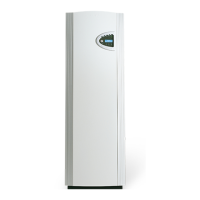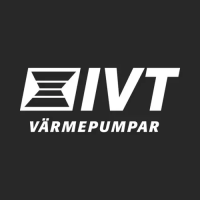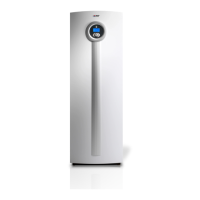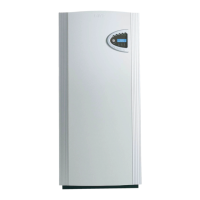Regulations
6 720 645 504 (2011/04) en
24
9Regulations
The following regulations and requirements must be
observed:
• The responsible power supply company's local
regulations and requirements, including the
corresponding special rules (TAB)
• BImSchG, Section 2 on installations which do not
require permits
• TA Lärm Technical Instruction on Noise Protection -
(general regulation in accordance with the Federal
Emission Control Act)
• National building regulations
• EnEG (Energy Saving Act)
• EnEV (German regulations on energy saving thermal
insulation and energy saving building design)
• EN 60335 (Safety of electric and similar household
appliances)
part 1 (General requirements)
Part 2-40 (Particular requirements for electrical heat
pumps, air-conditioners and dehumidifiers)
• EN 12828 (Heating systems in buildings. Design for
water-based heating systems)
• DVGW, Wirtschafts- und Verlagsgesellschaft, Gas-
und Wasser GmbH - Josef-Wirmer-Str. 1–3 -
53123 Bonn
– Worksheet W 101
Guidelines for drinking water protection areas;
part I: protection areas for groundwater
• The following DIN standards:DIN 1988, TRWI
(Technical Regulations for Drinking Water
Installations),DIN VDE 0100, Part 701 (Installation of
High-Power Equipment with Rated Voltages up to
1000 V, Rooms with Bath or Shower),DIN 4751
(Heating Systems; Safety Systems for Water Heating
Systems with Flow Temperatures up to 110 °C),DIN
4807 (Expansion Vessels)Beuth-Verlag GmbH -
Burggrafenstraße 6 -10787 Berlin
– DIN 1988, TRWI (Technical Regulations for
Drinking Water Installations)
– DIN 4108 (Thermal Insulation and Energy Economy
in Buildings)
– DIN 4109 (Sound Insulation in High Buildings)
– DIN 4708 (Central Hot Water Installations)
– DIN 4807 and EN 13831, respectively (Expansion
Vessels)
– DIN 8960 (Refrigerants -Requirements and
Symbols)
– DIN 8975-1 (Refrigerating Plants - Safety Principles
for Design, Equipment and Installation -
Interpretation)
– DIN VDE 0100, (Installation of High-Power
Equipment with Rated Voltages up to 1000 V)
– DIN VDE 0105 (Operation of Power Installations)
– DIN VDE 0730 (Regulations for Devices with
Electromotive Drive for Domestic Use and Similar
Purposes)
• VDI guidelines, Verein Deutscher Ingenieure e.V. -
P.O. Box 10 11 39 - 40002 Düsseldorf
– VDI 2035 Sheet 1
1)
: Prevention of damage in water
heating installations and scale formation in
domestic hot water supply installations and water
heating installations
– VDI 2035 Sheet 2
2)
: Prevention of water corrosion
in the heating system
– VDI 2081 Sound production and reduction in
ventilation systems
– VDI 2715 Noise reduction at domestic hot water
and central heating systems
– VDI 4640 Thermal use of the underground,
Sheet 1: Fundamentals, approvals, environmental
aspects;
Sheet 2: Ground source heat pump systems
• Austria:
– örtliche Bestimmungen und regionale
Bauordnungen
– Vorschriften der Versorgungsnetzbetreiber (VNB)
– Vorschriften der Wasserversorgungsunternehmen
– Wasserrechtsgesetz von 1959 in gültiger Fassung
– ÖNORM H 5195-1 Verhütung von Schäden durch
Korrosion und Steinbildung in geschlossenen
Warmwasserheizungsanlagen bis 100 °C
– ÖNORM H 5195-2 Verhütung von Frostschäden in
geschlossenen Heizungsanlagen
• Switzerland: kantonale und örtliche Vorschriften1
1) If the drinking water has a higher °dH than what is indicated in
VDI 2035, a water softener must be installed in the filling pipe
to the heating system - this in order to guarantee the function
of the heat pump. However, when the hardness is already
greater than 3 °dH, the performance of the heat pump will
deteriorate with time because of the lime deposits left on the
heat exchanger surfaces.
2) The standard discusses the problems but does not set any limit
values. This is why, we supplement with the following values:
Oxygen content, O
2
-0.5-1 mg/l. Carbon dioxide content, CO
2
-
<1 mg/l. Chloride, Cl - <100 mg/l. Sulphate, SO4 - <100 mg/l. If
the drinking water exceeds the limit values for chloride or
sulphate content, an ion exchange filter must be installed in
the filling pipe for the heating system. Do not use any water
treatment additives except agents for raising the pH level, keep
the water clean.
